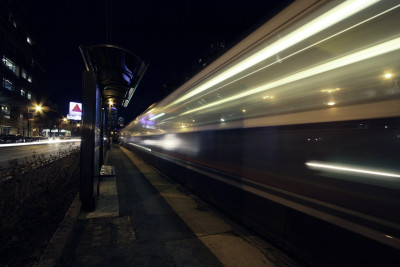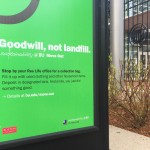 The Massachusetts Bay Transportation Authority released the first of its weekly performance statistics Monday, reporting that the several subway and bus services fell short of their target performance every day last week.
The Massachusetts Bay Transportation Authority released the first of its weekly performance statistics Monday, reporting that the several subway and bus services fell short of their target performance every day last week.
During peak hours Sept. 21 through Sept. 25, the Red Line was on time on average approximately 67 percent of the time, according to an average of daily statistics from the MBTA. The Orange Line was on time on average of approximately 64 percent of the time, the report stated.
Jason Johnson, a spokesman for the MBTA, said the statistics are part of the new MBTA Fiscal and Management Control Board’s commitment to transparency.
“The MBTA will not be pleased with the statistics until the figures show that targeted goals are being met,” Johnson wrote in an email. “For commuter rail trains, on time is defined as arriving within five minutes of scheduled arrival. For subway trains, arriving within one minute is desirable. 75 percent is the target for subway and bus, while commuter rail is expected to hit 90 percent.”
On Sept. 21, a man was struck and killed by a Red Line train at the JFK/UMass stop, Johnson said, and on Sept. 24, morning peak service was disrupted after a train went disabled at Kendall station, followed by signal and power issues between Kendall and Alewife stations.
The Blue Line was on time an average approximately 85 percent of the time, the report stated, and the Silver Line was on time approximately 89 percent of the time.
Johnson said although the statistics are not a solution to delayed service, the MBTA is working on the problem.
“We want our valued customers to know that the MBTA is fully committed to taking the steps necessary to improve bus, train and commuter rail service,” Johnson said.
Such steps took shape when Massachusetts Gov. Charlie Baker announced a winter resiliency plan in June, which includes third rail and heater replacements on outdoor sections of the T, fences to restrict snow accumulation, emergency power generators, specialized snow-removal equipment and anti-icing systems on passenger vehicles.
Peter Furth, an engineering professor at Northeastern University, said compared to other transportation systems in other cities, the T does not stay on schedule as well.
“I can tell you that for other cities, where the percentage of arriving on time is 90, 95 percent … there’s a comparable measure and ours is off the charts bad,” Furth said. “ … If you’re relying on a train to get to work on time, how many days a week is it okay for you to walk in and say, ‘well the train was late, the train made me late.’”
European countries consider within three minutes of arrival to be on time, Furth said, and would consider the T’s definition of timely arrival within five minutes to be too late.
Furth said one of the main reasons rapid transit is often overcrowded or delayed is not because of a slow train, but an aggressively fast train that forces customers to wait for the next one.
“With the frequent service it’s the lack of control that leads to a lot of things,” Furth said. “It’s allowing trains to go too fast, to get ahead. What we complain about is the one that’s late, but it’s the early one that caused the late ones.”
Several Boston residents said the T’s reliability can affect their ability to get around the city.
“Mostly on weekdays, the buses from Allston to Kenmore come with delays and we end up wasting a lot of time,” said Waldir Lagos, 33, of Allston.
Justin Rolnick, 30, of Kenmore, said he uses the Red Line and has experienced delays in its service.
“It’s not amazing. It does its job,” he said. “I have had the Red Line be late before, and when they’re late, they’re pretty late, like 20 minutes late.”




